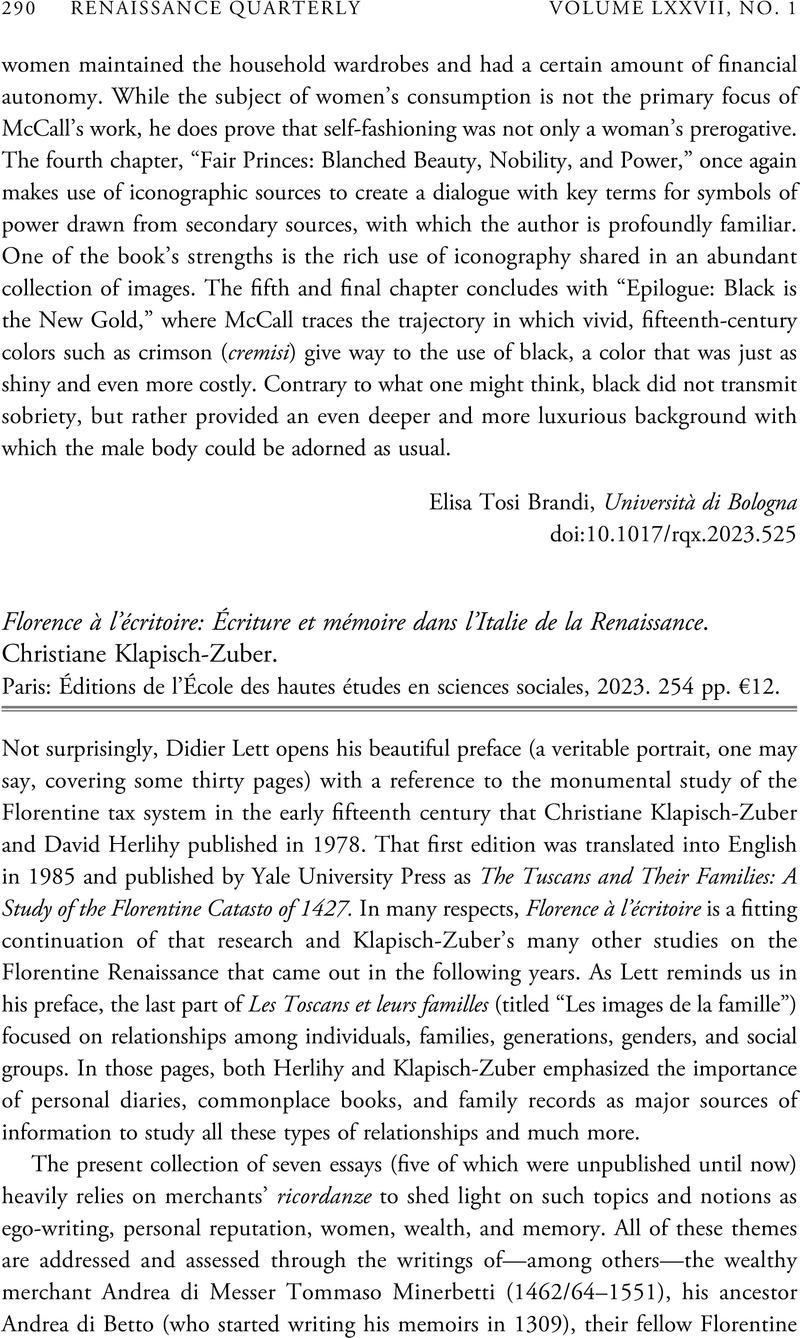No CrossRef data available.
Article contents
Florence à l’écritoire: Écriture et mémoire dans l'Italie de la Renaissance. Christiane Klapisch-Zuber. Paris: Éditions de l’École des hautes études en sciences sociales, 2023. 254 pp. €12.
Review products
Florence à l’écritoire: Écriture et mémoire dans l'Italie de la Renaissance. Christiane Klapisch-Zuber. Paris: Éditions de l’École des hautes études en sciences sociales, 2023. 254 pp. €12.
Published online by Cambridge University Press: 24 April 2024
Abstract
An abstract is not available for this content so a preview has been provided. Please use the Get access link above for information on how to access this content.

- Type
- Review
- Information
- Copyright
- Copyright © The Author(s), 2024. Published by Cambridge University Press on behalf of The Renaissance Society of America



